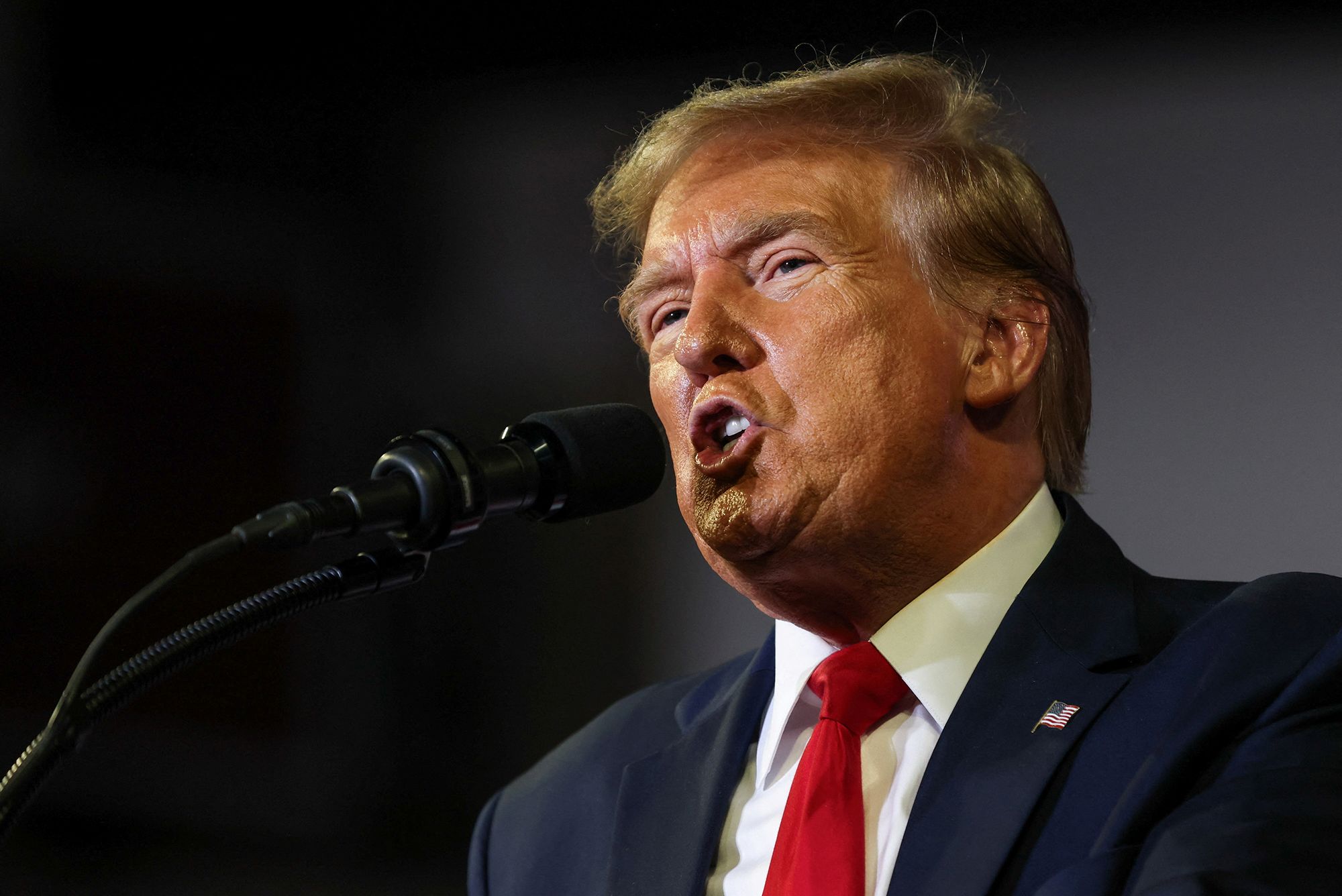Former President Donald Trump has once again stirred controversy with his remarks about the North Atlantic Treaty Organization (NATO), marking the third consecutive presidential election campaign where his statements about the military alliance have been called into question. Over the weekend, Trump sparked a transatlantic furore by suggesting at a campaign rally that he had once threatened a “big” NATO country with non-protection against a Russian invasion if they failed to pay their “bills”.
Trump’s provocative comments included a recurring false claim about NATO allies failing to pay their “bills”, a statement that has been debunked by fact-checkers at CNN and other outlets over the years. Trump’s misrepresentations about NATO and its members’ spending are not new. Here, we fact-check five of his most repeated claims.
Spending by NATO Members
Trump has consistently claimed that several NATO members have not paid their “bills”, “dues”, or “NATO fees”, and that they “owe us a tremendous amount of money” or “owe NATO billions of dollars”. However, these claims are unfounded. While it is true that a majority of NATO members do not meet the alliance’s guideline of spending a minimum of 2% of their gross domestic product (GDP) on defense, this target does not create bills, debts, or legal obligations if unmet. The guideline does not require payments to NATO or the US; instead, it mandates each country to invest in their own defense programs.
During Trump’s presidency, the guideline was framed in lenient language, emphasizing that it was not a strict commitment. The guideline, established at a NATO summit in Wales in 2014, stated that members yet to reach the 2% target would “aim to move towards the 2% guideline within a decade”. This means that members below the 2% mark in 2014 were not obliged to hit the target by 2024, but to strive towards it.
NATO does require members to make direct contributions to fund the organization’s operations. However, there is no evidence that members have failed to make these contributions, which constitute a small fraction of the allies’ defense spending. Trump’s talk of debts primarily revolves around the 2% guideline.
NATO Members’ Spending Before Trump Took Office
As president, Trump claimed that NATO members’ spending had declined “every single year” until he took office in 2017. However, official NATO data shows that non-US members’ defense spending increased by 1.6% in 2015 and 3.0% in 2016, before Trump’s presidency. These increases followed the 2014 summit where NATO members recommitted to the 2%-of-GDP guideline after Russia’s annexation of Ukraine’s Crimea region.
The US Share of NATO Spending
Trump repeatedly claimed that the US was “paying for 100% of NATO” or “paying close to 100%” before his tenure. However, official NATO figures show that in 2016, the last year before Trump took office, US defense spending accounted for about 71% of total defense spending by NATO members. This is a significant majority, but not “100%” or “close to 100%”.
What Previous Presidents Told NATO Members
Trump repeatedly claimed that previous US presidents, particularly President Barack Obama, did not press NATO members to increase their defense spending. However, both Obama and his predecessor, President George W. Bush, consistently urged other NATO members to increase their defense spending, albeit in less confrontational language than Trump’s.
The Cost of NATO’s Headquarters
Trump has claimed that NATO spent $3 billion on its headquarters building in Belgium. However, NATO confirmed in 2020 that the headquarters building was constructed for a sum under the approved budget of 1.178 billion euro, or about $1.27 billion at current exchange rates – a significant amount, but less than half of what Trump has claimed.

